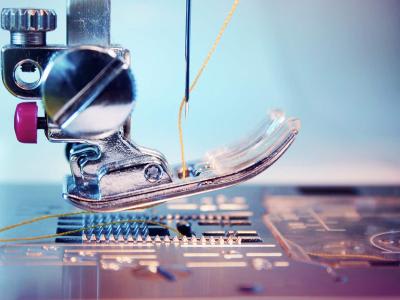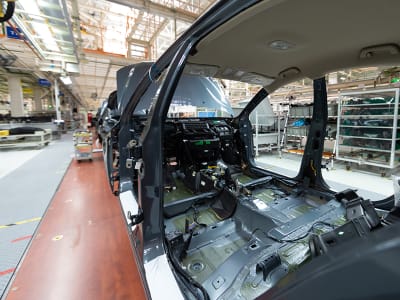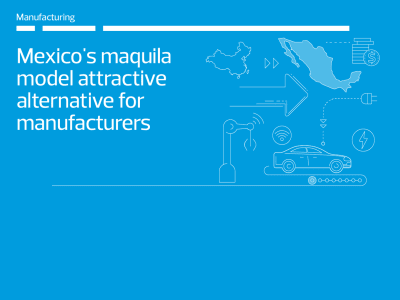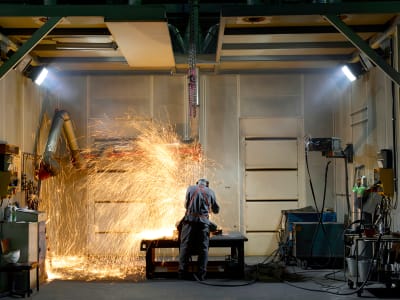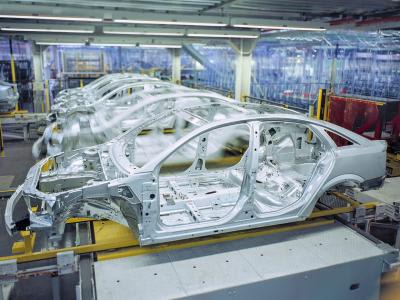The automotive industry represents one of the world’s largest industries, encompassing the design, development, manufacturing and selling of vehicles. Aside from a drop in 2009, the industry has been consistently growing in production numbers since 1997. This diverse and global industry has given way to innovation in many areas of the automotive supply chain.
The industry, like many others, was drastically affected by the global pandemic that spread throughout the world in 2020 and continues to present new challenges. The pandemic arrived at a tumultuous time for the automotive industry, which was already in the throes of existential change. Many things are happening at the same time, with the switch to electric cars, connected cars and autonomous cars, among others. In addition, the business model is changing from manufacturing vehicles to selling mobility services. There are many companies in the supply chain that are already struggling to cope with these changes, without even considering the pandemic. The impact of this crisis on the auto industry depends on what governments can do to keep ailing businesses afloat. In addition, more than 100,000 jobs in the German auto industry are directly threatened by the pandemic, rising to 830,000, with dire consequences for consumer consumption.
In Canada there are number of companies that are researching and developing automotive technologies, such as autonomous and connected vehicles. These companies include GM, Ford, Uber, Google and Nvidia. The Netherlands have similarly seen developments in research into automotive solutions at a manufacturing level. Within the United Kingdom, the automotive industry can be split into two distinct elements, retail sales and manufacturing.
Changing gears in the pandemic
The various lockdowns over the year have seen significant disruption to business continuity. As a consequence, the automotive industry has been forced to adapt to this new environment like every other industry. Liquidity is one of the key priorities for organisations as they look to weather the COVID storm and survive. Many of these companies have sought government subsidies to unlock adequate liquidity to support operations and to minimise the need to downsize workforces. Plants were shut down at the beginning of the pandemic. Since then, companies must implement protocols to allow employees to return to work safely, while manufacturers are left to adapt and test its remote work technologies.
Automotive clients will begin looking to make investments in technology to digitise its shop floor. There is a growing global shift towards a more visibly sustainable and ethical platform for the automotive industry. The Manufacturing 4.0 sustainability (M4.0) agenda is expected to be pushed forward. There will be a shift in the makeup of the workforce in the long run where digital acumen is going to be an important skillset. With the change in Electronic Vehicles (EV) vs Internal Combustion Engine (ICE) vehicles, there will also be new training required for the manufacturers. At the same time, the makeup of the supply chain is going to change. The suppliers who are slow to adopt technology will likely lose out and new and more nimble companies will likely take their place.
In the UK, the biggest single impact has been the closure of plants and retail facilities resulting in a near complete stoppage of the automotive manufacturing supply chain and sales in automobiles. The manufacturing sector within the UK has started to return but volumes remain well below COVID-19 and this is affecting the overall supply chain. Many businesses with global supply chains have struggled as shortages of stocks of key components have followed the impact of shutdowns globally alongside a similar impact on sales of vehicles. With China and the Far East shutting down first and many other countries following, culminating in the US shutdowns - sales have fallen, and supply chains have fractured. This has caused delays and inefficiencies to businesses.
The key challenge has been the retention of staff and payment of salaries where production has stopped entirely, and demand is difficult to predict into the future. The UK Government furlough schemes have worked successfully to enable businesses to retain staff and be more agile, but we are seeing businesses reduce staff numbers as they are unable to return to full production due to social distancing measures being required. We have also seen businesses investing in productivity improvements, either mechanisation or improved processes, resulting in longer term reductions in staffing levels within the industry.
On the demand side, the automotive industry must hope that the consumer desire for new cars will pick up again. Major expenditures are usually delayed in such major crises. The figures from May confirm this picture. Obviously, it is extremely difficult to make a good estimate of the late cyclical influences. The pandemic exposes the “huge problem” of chain dependence in the automotive industry. The large factories assemble cars with parts from global suppliers. To save costs, a minimum stock is kept. However, the industry will not fully take off as long as each country relaxes its lockdown measures at a different time.
Facing the pandemic, Chinese companies and residents responded actively to the government’s restrictions and stopped production. From January to March 2020, the industry saw a significant drop, however since the second quarter, production and consumption gradually returned to normal, although exporting and importing business of some companies have been affected to some extent.
Affected by the external environment, cross-border transactions and communications have experienced some loss. The impetus of economic growth has shifted to domestic market growth with more emphasis on domestic internal recycling.
Re-energising the industry
The global automotive industry was already in trouble before COVID-19 swept across the world. The trade war, environmental concerns, and the search for future motoring among any other things were already weighing on sales.
Automotive companies will look to build resilience in their supply chain. Companies will invest in technology and the use of additive manufacturing will likely increase to smooth out any potential disruption in production. The OEMs will have greater visibility on its suppliers and be able to track and trace any potential disruptions or defects on parts from the suppliers so that it can adjust its production schedule to minimise disruption.
In the longer-term, an overall reduction in staffing requirements for automotive manufacturers will potentially align with a more flexible working environment. Agile employment contracts will enable manufacturers to adapt to changes in demand with relative ease. Cars themselves will also become simpler to physically produce as the shift towards EVs continues. However, this will also result in them becoming more complex from an IT perspective, requiring a highly skilled workforce with vastly different skillsets and experience than has been normal previously. The likely outcome of this major shift in focus is that the automotive industry will come into competition with other sectors that also require these skill sets.
With regards to the manufacturing process, it is possible we will see a move towards a consolidated modular platform as multiple OEMs share the same modular designs and technology. Manufacturing plants with increased automation will benefit whilst older, less efficient plants will start to disappear.
The Netherlands is a frontrunner in developing technologies that will define the traffic networks and systems of the coming decades. Smart (i.e. cooperative and autonomous) and green mobility are the focus. Fully autonomous vehicles will be the norm in the future and the development of 5G connectivity will accelerate their adoption into the wider market. Automotive companies will need to invest in this area to fully capitalise on the growing opportunity. This will also bring a significant amount of disruption in the various industries, for example transport and logistic sector. Transportation companies that have traditionally employed many drivers will need to make decisions on their capital investments and how-to re-tool their employees in the world with autonomous vehicles. Having said this, a significant hurdle on the adoption of autonomous vehicles will be the regulators. Companies should consider how they can influence the decisions of the policy makers.
Innovation in the face of crisis
Whilst there is currently no certainty on what the future of the global economy looks like, the pressure facing the automotive industry has triggered a faster push towards the technological change that has been developing slowly. The once abstract concept of a world driven by electric vehicles is now becoming an inevitable outcome, rather than an optimistic pipedream. Alongside these innovations and technological changes will come the requirement for the industry to change. With this change comes a vastly different set of challenges and opportunities for the entire industry to face proactively and drive a new revolution of industry.


